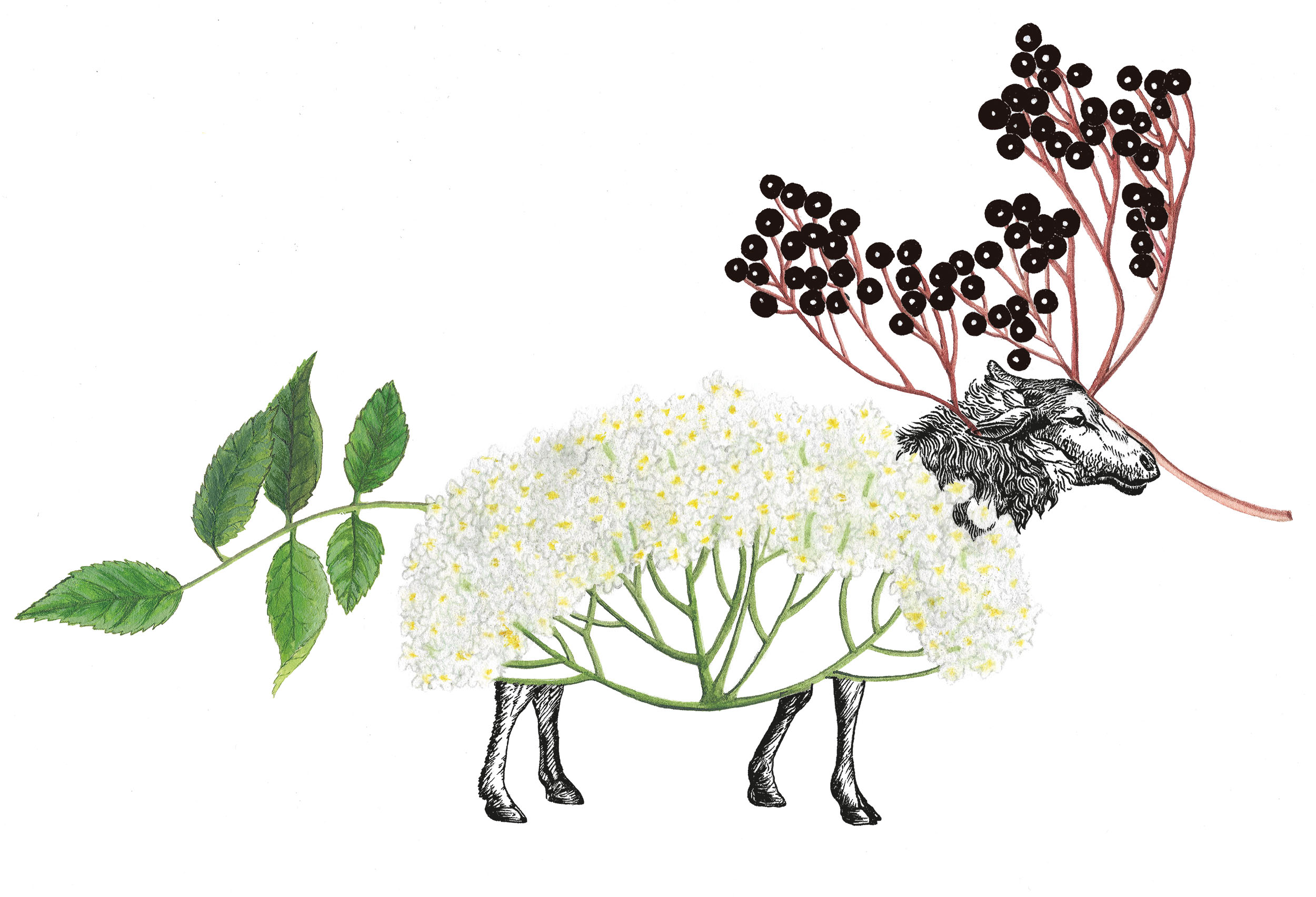
People eat less than they used to. Not necessarily in terms of quantity, but of diversity, with merely a few plants constituting 80% of our diet. This is unprecedented! Professor Jarosław Dumanowski talks with Magdalena Kasprzyk-Chevriaux about the foods we have forgotten and the importance of our culinary roots.
Jarosław Dumanowski: They say that every 50 years, mankind loses half of its knowledge about nutrition. Such estimates aren’t of course strict, but they provide us with some insight into how acute this problem is.
Magdalena Kasprzyk-Chevriaux: Why do we need this forgotten knowledge back?
Partly because, in terms of the history of food, we are living in a very peculiar moment. It’s the time of gastronomy and everything is topsy-turvy. We’re undoubtedly losing knowledge and resources. Climate is changing, food production has become industrialized, and the divergence of farmed plants and animals is rapidly decreasing.
Under such circumstances, this lost knowledge could be quite useful. We need to archive it, reproduce it, perhaps bring it back.
And to create gene banks of ancient plants or animals.
I’m adamant that there should also be a place for the forgotten historical and cultural knowledge on how to make use of those bygone species, since we cannot predict what and when we will need. For now, such knowledge is helpful in developing programmes of sustainable growth or ecotourism, promoting regional foodstuffs, or creating new fashions.
Let’s talk about specific examples of the lost knowledge that you’ve rediscovered while delving into ancient Polish herbaria and our oldest cookbooks.
Old herbaria are very comprehensive. Their authors often write about healthy eating. We based Volume Six of our Monumenta Poloniae Culinaria on what can be found in herbaria, and we reproduced many recipes. Some of them bridge cookery and medicine, making use of many forgotten vegetables and herbs, as well as wild plants, which are now so fashionable.
The famous historian Fernand Braudel, one of the co-founders of the Annales School, considered it most astonishing that wild foods persist despite everything that’s going on in the world. All it takes is a famine, an epidemic, a food crisis, or even a food trend, and the seemingly forgotten knowledge comes back. It is always lurking somewhere.
Can you give me an example?
I sometimes ask people whether they’ve ever eaten manna. Half of them say yes. I then joke that I myself have tried it. Of course, I don’t mean kasza manna, in other words semolina, which was a delicious staple of my childhood, but mannagrass or sweet-grass, a totally different plant.
In the Middle Ages and the early modern era, the Poles’ main claim to fame in Europe wasn’t our exceptional wisdom, piety or bravery, but the fact that we were eating sweet-grass. It played a huge role, to the extent that it was widely known as manna polonica – Polish mannagrass. We used to export it to Brandenburg, Silesia and Germany. I wrote a short monograph on this subject, along with ethnobotanist Łukasz Łuczaj and archaeologist Piotr Keller.
And is this manna polonica still growing somewhere in Poland?
It probably is, but no one harvests it.
Mannagrass is perhaps an extreme yet perfect example of one aspect of culinary history. Food used to be scarce, but people had plenty of time. Labour was cheap. For most of our ancestors it was simply ‘will work for food’. So at daybreak, people would walk the vast backwaters and wild pastures where mannagrass grew. They harvested it by hand into special sieves – only in the mornings when it was wet and wouldn’t float away with the wind, since it’s usually very light.
Today it is hard to come by it. The environment has changed and larger quantities of this grass are rare. […]
Why are you putting mannagrass into a totally different category of forgotten plants, rather than, let’s say Jerusalem artichoke, which today is in vogue?
From the moment Jerusalem artichoke entered the culinary scene, it has never really disappeared. It is an exotic plant, brought from America, and quite late at that – only in the 17th century. It is also cultivable, while the history of mannagrass goes back to the times long before the Neolithic Revolution, when people were foraging for food. We’ve been using it since time immemorial. Jerusalem artichoke’s history is merely three centuries long, and the plant was only forgotten for a couple of decades, because of the world wars. With mannagrass, we return to the beginnings of human history. If someone was to seriously consider taking up the paleo diet, they should definitely include mannagrass. But in order to bring it back, we would have to go foraging around meadows and marshlands. You won’t find it growing at the side of the road, you can’t buy it in the shop. […]
Another discovery of yours was juniper beer. It’s surprising that it was forgotten, because juniper is a common plant. What’s so special about this beverage?
The juniper beer I’m thinking of is not beer as we understand it today, but a low-alcohol drink, made without any wheat or malts. The production process doesn’t make for easy distribution, but this ‘beer’ has not been entirely abandoned. It is registered as ‘juniper beer’ or ‘Kurpie psiwo’ [after the Kurpie ethnic group in mid-north-eastern Poland – ed. note] on the government’s list of traditional specialities. I’ve even tried it.
What does it taste like?
That depends on how you make it. The one I drank was made according to a Christmas recipe, quite lavish, certainly not fit for mass production because it would have to be very expensive. It was sweet, honey-based, with lemon or lemon zest, and of course juniper – bitter and aromatic.
Why was it so important once?
Just as mannagrass played a big role from the environmental perspective, juniper beer was important because of its availability. Which is unusual, considering that we now think of wild foods as a culinary extravagance. Beer used to be an essential part of the diet – a high-calorie drink for the general populace. It was almost free, though making it required a lot of effort. But, as we’ve already mentioned, people used to work essentially without pay.
For hundreds of years, people were producing many other beverages made of wild plants, fruits, herbs, cultivated plants such as beetroots, or even weeds like couch grass. One could make low-alcohol ciders, kvasses, ‘beers’ or ‘wines’ out of almost anything. Freshwater was scarce and perilous when stored, so those beverages were of huge importance.
In the times when forests covered a far greater part of Poland’s territories than today, those drinks were easily available. The botanist Adam Maurizio – a scholar of great fame, though now unjustly forgotten – mentions them in his Historii wyżywienia roślinnego w Polsce [History of Plant Alimentation in Poland]. And that precisely is the lost knowledge which today, due to a lack of continuity, seems avant-garde.
Agriculture means that nature is ever more shaped by man. But even among cultivated plants, we have some forgotten species, even native ones unlike the Jerusalem artichoke. For example, foxtail millet.
Foxtail millet? What’s that?
I had to work hard on this one. It is a foxtail – a millet-like plant sometimes known as Italian millet, hugely popular in the Middle Ages. Very resistant, undemanding but at the same time not very efficient. Moreover, it has a very intense taste and smell. It started going out of fashion already in the Middle Ages. 16th-century Polish agriculture textbooks called it a rare crop.
Then it started to appear in tasty gingerbread cakes. It was an excellent fit – gingerbread is all about the juxtaposition of sweet and spicy.
Foxtail millet presents us with a very good example of lost biological diversity in agriculture. It was an element of various dishes that today means nothing to us. It even served as something akin to flour or groats.
Wild foods are a very fashionable subject in haute cuisine.
But hardly a new one. The turn of the 19th century brought a renaissance in wild cookery, which was seen as a refuge from the increasing spread of French cuisine, cosmopolitan and no longer distinctive of aristocracy. This was partly due to the literary movement of Sentimentalism.
A terrific example of this is Michał Kleofas Ogiński, a politician and famous composer. He was raised by a French teacher Jean Rollin, who believed in and was greatly influenced by the work of Rousseau. Jean-Jacques Rousseau in his Emile, an 18th-century treatise on education, emphasized that everything made by divinity is perfect, while everything made or even modified by man is evil, corrupt and unnatural. That also concerns food.
Such trends are rooted in Romanticism, the first ever counter-culture culinary movement. It was during this time that vegetarianism first appeared, along with the avant-garde, almost revolutionary emphasis on wild foods.
Another wonderful, wild and forgotten plant is hogweed.
That’s a fascinating story. For, as we know, the word barszcz – Polish for ‘hogweed’ – is deeply rooted in Polish culinary culture.
But hardly anyone knows where it comes from.
From barszcz zwyczajny – heracleum, a wild (though sometimes also cultivated) genus of species in the family Apiaceae. Today it mostly frightens us, as it is associated with Sosnowsky’s hogweed.
Hogweed has plenty of nutritional mass. The leaves and young stems can be pickled and stored for a long time. I encountered this ancient and seemingly extinct tradition when eating pickled hogweed made by my colleague from Toruń, Filip Mianowski (who, incidentally, also uses it for bigos stew, soup and pierogi). It was very celery-like, even lovage-like, aromatic and striking.
Hogweed was forgotten a long time ago. But I’m not that fascinated by the process of reclaiming it for the present, because I know its history.
Since we’re talking about hogweed, we should explain how its Polish name barszcz has become the name of one of the country’s most popular soups.
I’ve analysed this through cookbooks. You can follow the changes. The plant was so popular that a soup made of pickled hogweed was named barszcz for short, which seems logical. 16th-century herbaria suggest that hogweed was widely used, though later only in Russia and Lithuania. 500 years ago, its popularity started to decline and soon it was confined mainly to the eastern part of the country.
After that, the name was extended to a soup made of pickled beetroots [known in English as ‘borscht’ – ed. note]. Pickling was thought to preserve food, but also to improve the taste and provide health benefits.
The interview is an excerpt from the book “Kapłony i szczeżuje. Opowieści o zapomnianej kuchni polskiej” [Capons and Duck Mussels: Stories of Forgotten Polish Cuisine], which was recently published by Wydawnictwa Czarne. Parts of this interview have been edited and condensed for clarity and brevity. The title and lead were written by the “Przekrój” editorial office.
Translated by Jan Dzierzgowski








